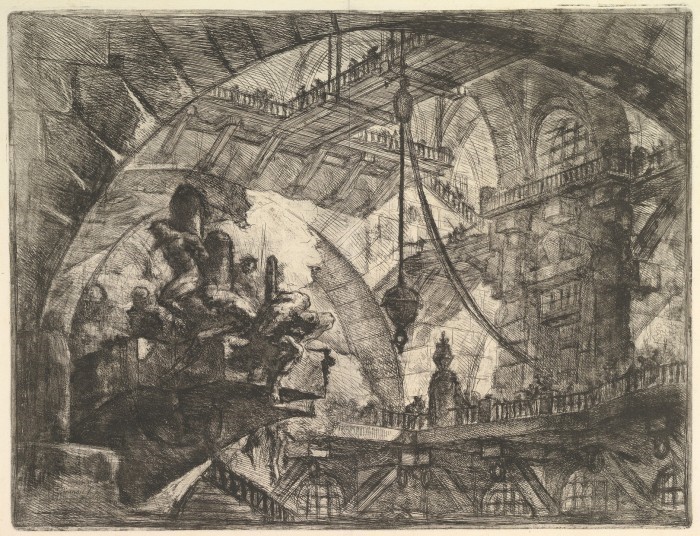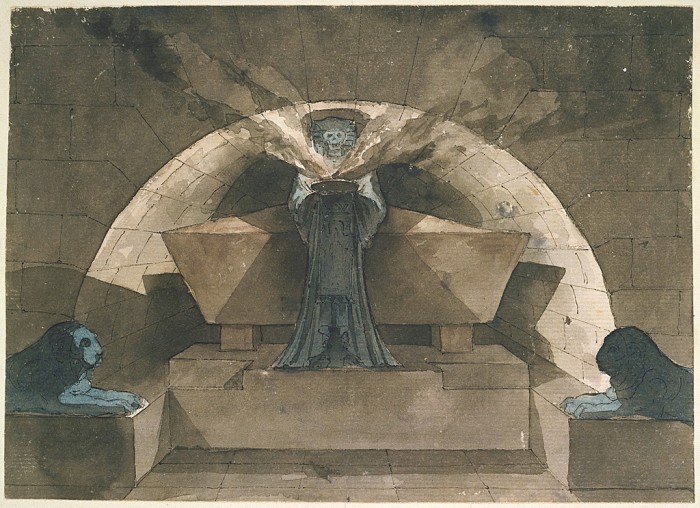Simply Macabre
It’s the spooky season and we thought you might enjoy some artful creepiness from the collections of Cooper Hewitt.
In this atmospheric drawing, the robed figure of Death holds a smoking brazier and presides over a tomb cast in a gray wash. Stark shadows describe the geometric forms of a massive sarcophagus and sepulchral niche. The simplicity of the somber interior evokes the proportions of Egyptian architecture, as well as that ancient culture’s fascination with death.
Louis-Jean Desprez was an artist of great originality with a distinct taste for the bizarre and macabre. The late eighteenth century saw a growing interest in sublime terror and morbid visions, as reflected in supernatural literary motifs and Gothic revival architecture.
The dramatic lighting and abstracted space of Desprez’s designs were likely inspired by Giovanni Battista Piranesi’s Carceri d’invenzione (Imaginary Prisons) series, first published in 1750. In 1776 Desprez went to Rome, where Piranesi’s work was enormously popular. The following year, Desprez traveled to Naples, where he made numerous visits to tombs and catacombs.

Giovanni Battista Piranesi, Prisoners on a Projecting Platform, from Carceri d’invenzione (Imaginary Prisons), ca. 1749-50. Etching, engraving, sulphur tint or open bite, burnishing, Metropolitan Museum of Art
Four of Desprez’s Egyptian-themed tomb drawings were reproduced as large aquatint prints; the artist was introduced to the intaglio printmaking technique in Rome. He admired aquatint for its capacity to produce soft tonal variations that closely resembled eerie washes of ink. Prints offered Desprez the means to disseminate his experimental architectural designs and to showcase his fertile imagination.
This post by design historian Rebekah Pollock was originally published by Cooper Hewitt’s blog, Object of the Day.
Posted: 29 October 2016
- Categories:




